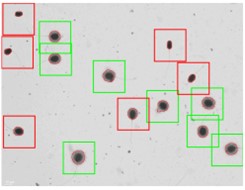In male infertility diagnostics, semen analysis is essential for determining the quality of semen. Semen analysis includes the assessment of the following semen parameters: volume and pH of the ejaculate, total sperm count and concentration, number of round cells, sperm motility, vitality, and morphology. There are also additional semen quality tests such as sperm DNA fragmentation analysis.
In the standard semen analysis, semen is examined under the microscope, and values are compared with the World Health Organization (WHO) criteria. Data important for semen quality diagnostics can be missed by the human eye during microscopic examination, hence computer systems have been developed.
In 2021, we introduced a Sperm Class Analyzer (SCA®) with an integrated system for automatic analysis of semen quality (Computer Assisted Semen Analysis, CASA) by the Microptic company. SCA system provides precise, high-quality, and detailed analysis of sperm concentration, motility, morphology, DNA fragmentation, vitality, agglutination, aggregation, round cells, acrosome reaction, sperm hyperactivity, and velocity of sperm mucus penetration.
The system automatically recognizes and categorizes sperm based on the velocity rate and motility, observing the differences and patterns the human eye cannot.
We would like to explain the terms regarding sperm motility and velocity that are presented in the semen analysis findings (Figure 1. Representation of sperm movement and terminology used in CASA system, WHO 2010):
Velocity (in µm/sec)

- VCL (curvilinear velocity) is the time-averaged velocity of a sperm head along its actual curvilinear path
- VSL (straight-line velocity) is the time-averaged velocity of a sperm head along the straight line between its first detected position and its last
- VAP (average path velocity) is the time-averaged velocity of a sperm head along its average path
Sperms are classified according to velocity as rapidly progressive (VCL > 25 µm/sec), slowly progressive (25< VCL <5), non-progressive (VCL <5) or immotile (VCL = 0).
Progressivity (in percentage)
- LIN (linearity) is an index of linearity of a curvilinear sperm path (VSL/VCL)
- STR (straightness) is an index of linearity of the average path (VSL/VAP)
- WOB (wobble) is the oscillation index of the actual path about the average path (VAP/VCL)
According to progressivity, sperm are classified as progressively motile (STR > 80%), non-progressive (80% > STR > 0%), and immotile (STR = 0%).
- ALH (amplitude of lateral head displacement) is the magnitude of lateral displacement of a sperm head about its average path, in µm
Criteria for classification of sperm hyperactivity are VCL > 150 µm/sec, ALH > 3,5 µm
Criteria for penetration of sperm through mucus are VAP >25 µm/sec STR > 80%, and ALH > 1,25 µm
- BCF (beat-cross frequency) is the average rate at which the curvilinear path crosses the average path, in Hz
During the analysis, the computer system describes the movement of sperm in different colors, calculates values of sperm motility, and assigns each sperm a motility category.
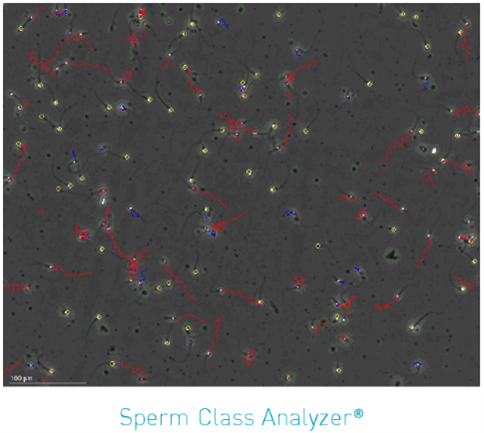
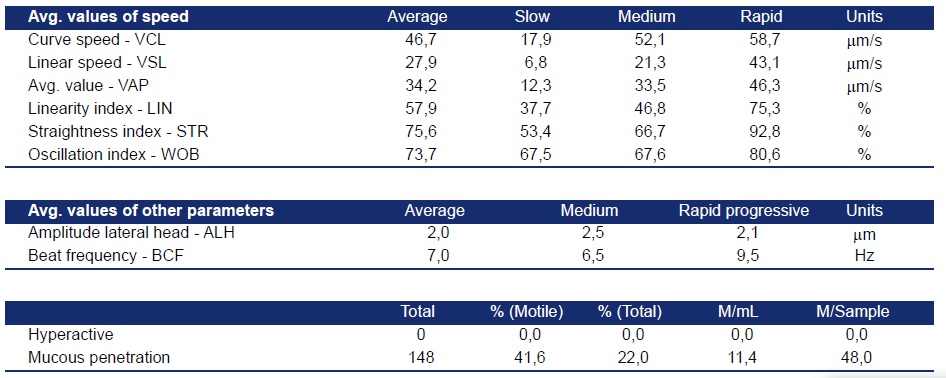
Sperm morphology
The computer system analyzes every sperm separately, and data is obtained on 200 sperm. Sperm is categorized based on standard classification together with data on single and grouped abnormalities. Besides standard classification, morphological and morphometrical values are detected.
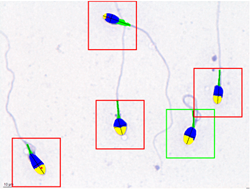
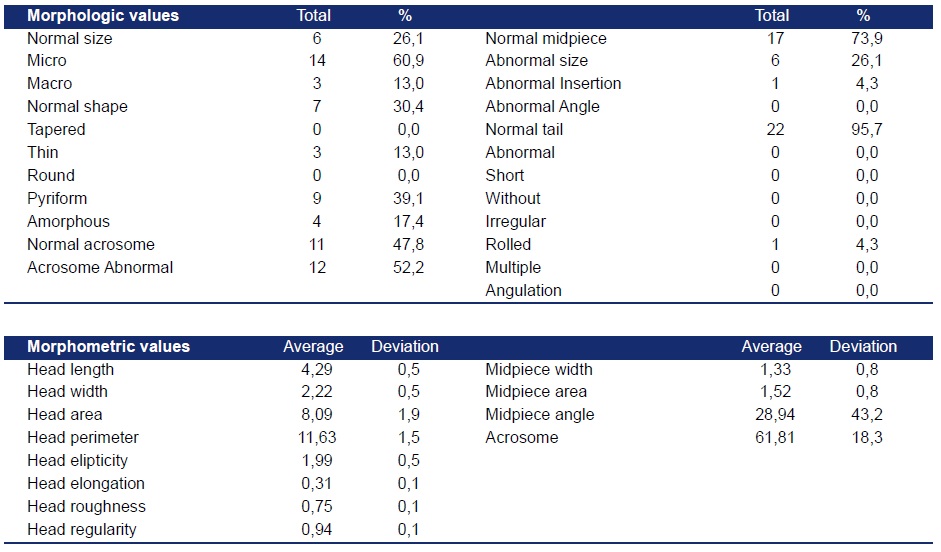
Sperm vitality
Based on sperm staining, the computer system detects the number of live and dead sperm and gives the data about vitality.
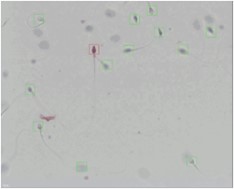
DNA fragmentation
In DNA fragmentation analysis, the computer system recognizes fragmented and non-fragmented sperm. The difference is based on the size of the sperm halo and whether it is big, medium, small, no-halo, or sperm is degraded.
